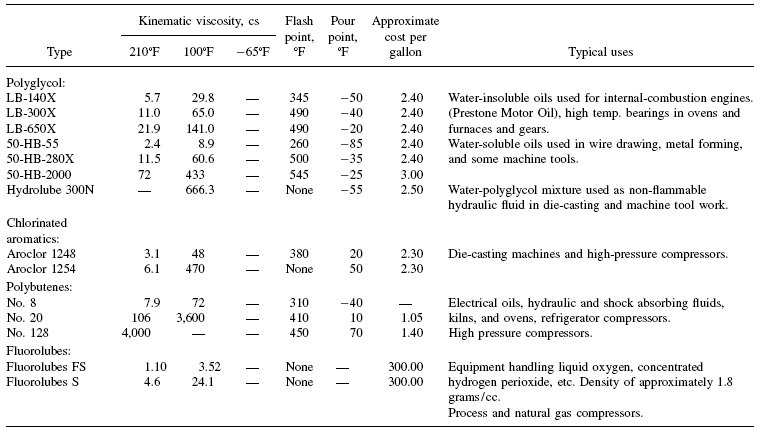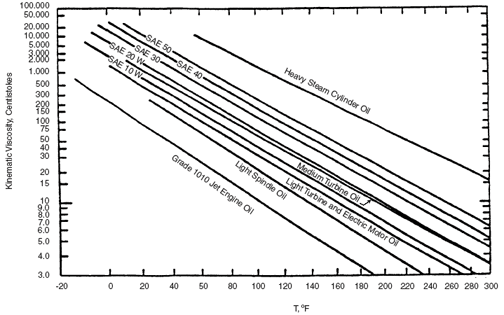Viscosity and Characteristics of Synthetic and Petroleum Based Lubricants (Oils)
Lubrication Engineering & Design
Viscosity and Characteristcs of Synthetic and Petroleum Based Lubricants (Oils)
The major functions of a lubricant in a bearing application is to provide a fluid film at the interface; to convect the heat due to viscous dissipation; and to wet the surfaces during stops and starts when there is no full film at the interface. In a hydrodynamic bearing, the most important property in fulfilling the above functions is the viscosity. The level of generated hydrodynamic pressures and hence the load capacity, as well as all other performance characteristics such as temperatures, flow, power loss, etc., all depend very strongly on lubricant viscosity.
Viscosity and Characteristcs of Synthetic and Petroleum Based Lubricants (Oils)
The following charts and graphs are approximate.
Click on images to enlarge
Multiply |
By |
To obtain |
Stokes (cm2 / sec) |
Density (g/cm3) |
Poises (gm/cm-sec) |
Poises |
100 |
Centipoises |
Centistokes ) |
Density (g/cm3 |
Centipoises |
Centipoises |
1.45 x 107 |
Reynes (lb force-sec / in2) |
Centipoises |
2.42 x 109 |
(lb force-min/ in2) |
Centipoises |
5.6 x 105 |
(lb mass in-sec) |
Reyns (lb forc-sec /m2) |
6.895 x 103 |
Pascal-sec (N-sec/m2) |
Centipoises |
10-3
|
Pascal-sec (N-sec/m2) |

